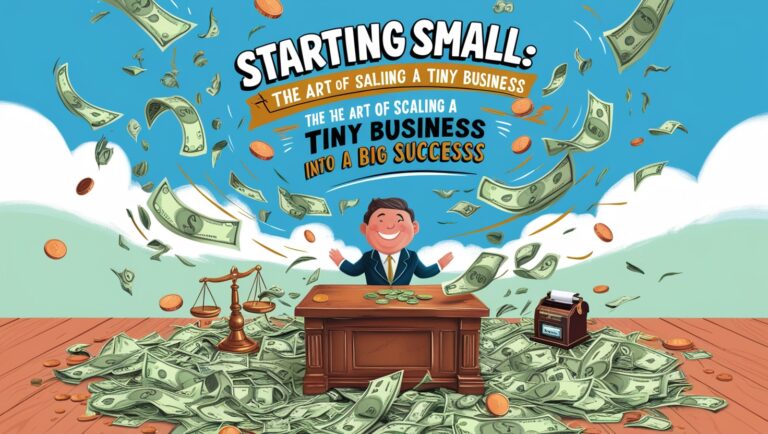Dropshipping: How to Start an E-commerce Business with No Inventory

The world of e-commerce is booming, and one of the most attractive business models emerging from this growth is dropshipping. This method allows entrepreneurs to sell products directly to customers without holding inventory, making it a low-risk and cost-effective way to start an online store. If you’ve been thinking about diving into e-commerce but are hesitant because of storage, logistics, and upfront costs, dropshipping might be the perfect solution for you.
In this guide, we’ll break down the dropshipping model, how to get started, and the steps to ensure your e-commerce business thrives.
1. What is Dropshipping?
Dropshipping is a retail fulfillment method where the store owner doesn’t keep the products in stock. Instead, when a customer places an order, the store purchases the item from a third-party supplier, who then ships it directly to the customer. This means you, as the store owner, never handle the product.
Key Benefits of Dropshipping:
- Low Startup Costs: No need to buy products in bulk or rent storage space.
- Minimal Risk: Since you don’t purchase inventory upfront, there’s no risk of being stuck with unsold goods.
- Location Independence: You can run your business from anywhere with an internet connection.
- Wide Product Selection: You can offer a wide variety of products by partnering with multiple suppliers.
2. How Does Dropshipping Work?
The dropshipping process can be broken down into five simple steps:
- Choose Products and Suppliers: You list products on your online store from suppliers.
- Customer Places an Order: A customer orders an item from your e-commerce site and pays you the retail price.
- Order Forwarded to Supplier: You forward the order details to your supplier and pay the wholesale price.
- Supplier Ships the Product: The supplier ships the product directly to the customer under your brand.
- Profit Margin: You keep the difference between the retail and wholesale price.
3. How to Get Started with Dropshipping
Step 1: Choose a Niche
Selecting a profitable niche is crucial for your dropshipping business’s success. The right niche will have enough demand but not be overly saturated.
Tips for Choosing a Niche:
- Look for Trending Products: Use tools like Google Trends, TikTok, and Amazon to spot rising trends.
- Focus on Passion and Interest: Selling products you’re passionate about can make marketing easier.
- Check Profit Margins: Avoid products with very slim margins, as you still need to cover marketing costs.
- Solve a Problem: Choose products that solve a common issue for your target audience.
Popular Niches for Dropshipping:
- Fitness and Health Equipment
- Eco-Friendly Products
- Pet Supplies
- Home Improvement and Decor
- Tech Gadgets
- Fashion and Accessories
Step 2: Find Reliable Suppliers
Your supplier plays a critical role in your business. Delays, poor-quality products, or bad communication can harm your reputation.
Where to Find Suppliers:
- AliExpress: One of the most popular platforms for dropshipping.
- Spocket: Connects you with suppliers in the US and EU for faster shipping.
- Modalyst: Works with suppliers that offer branded packaging.
- SaleHoo: A directory of verified suppliers across different industries.
How to Vet Suppliers:
- Order sample products to test quality and shipping times.
- Check reviews and ratings of the supplier.
- Ensure clear communication and responsiveness.
- Look for suppliers who offer tracking numbers.
Step 3: Build Your Online Store
You’ll need an e-commerce platform to showcase your products and manage sales.
Top E-commerce Platforms for Dropshipping:
- Shopify: User-friendly, integrates with most dropshipping apps.
- WooCommerce: WordPress-based and highly customizable.
- BigCommerce: Suitable for scaling businesses.
- Wix eCommerce: Easy to use with drag-and-drop features.
Key Elements for Your Online Store:
- Professional Design: Use clean, simple templates that highlight products.
- Compelling Product Descriptions: Focus on the benefits and features of each product.
- High-Quality Images: Use professional images or request them from suppliers.
- Mobile Optimization: Ensure your site works seamlessly on mobile devices.
Step 4: Market Your Store
Marketing is vital to drive traffic and generate sales. Since dropshipping margins can be thin, focus on cost-effective and high-converting strategies.
Effective Marketing Strategies:
- Social Media Ads: Platforms like Facebook, Instagram, and TikTok allow for targeted ad campaigns.
- Influencer Marketing: Partner with influencers to promote your products.
- SEO (Search Engine Optimization): Optimize product pages for search engines to attract organic traffic.
- Email Marketing: Build an email list to promote new products and offer discounts.
- Content Marketing: Use blogs, videos, and tutorials to build trust and attract visitors.

Step 5: Automate Your Dropshipping Business
Automation can save you time and streamline operations.
Useful Dropshipping Tools:
- Oberlo (for Shopify): Automates order processing from AliExpress.
- DSers: Helps process bulk orders from AliExpress quickly.
- AutoDS: Automates product importing, pricing, and order fulfillment.
- Zendrop: Focuses on faster shipping and better supplier connections.
4. Common Challenges in Dropshipping (and How to Overcome Them)
- Long Shipping Times:
- Solution: Use suppliers that ship from local warehouses or choose faster shipping options.
- Low Profit Margins:
- Solution: Focus on upselling, bundling, and adding higher-priced products to your store.
- High Competition:
- Solution: Build a brand around your store by offering unique packaging, excellent customer service, and exclusive content.
- Product Quality Issues:
- Solution: Always order samples before listing products.
5. Scaling Your Dropshipping Business
Once your store starts generating consistent sales, it’s time to scale:
- Expand Product Range: Introduce complementary products.
- Retargeting Ads: Use retargeting campaigns to bring back visitors who didn’t purchase.
- Offer Faster Shipping: Work with suppliers closer to your customer base.
- Branding: Invest in custom packaging and branded invoices to create a more personalized experience.
6. Is Dropshipping Right for You?
Dropshipping is an excellent entry point into e-commerce. It requires minimal upfront investment, allows you to test different products, and offers flexibility. However, like any business, it requires effort, patience, and strategic planning.
Pros:
- Low barrier to entry
- Minimal financial risk
- Flexible work-from-anywhere model
Cons:
- Low-profit margins
- Supplier reliability issues
- High competition

With the right niche, supplier, and marketing strategy, dropshipping can become a profitable and sustainable business model. Whether you’re looking for a side hustle or aiming to build a full-time e-commerce brand, dropshipping offers endless possibilities to achieve financial independence.






